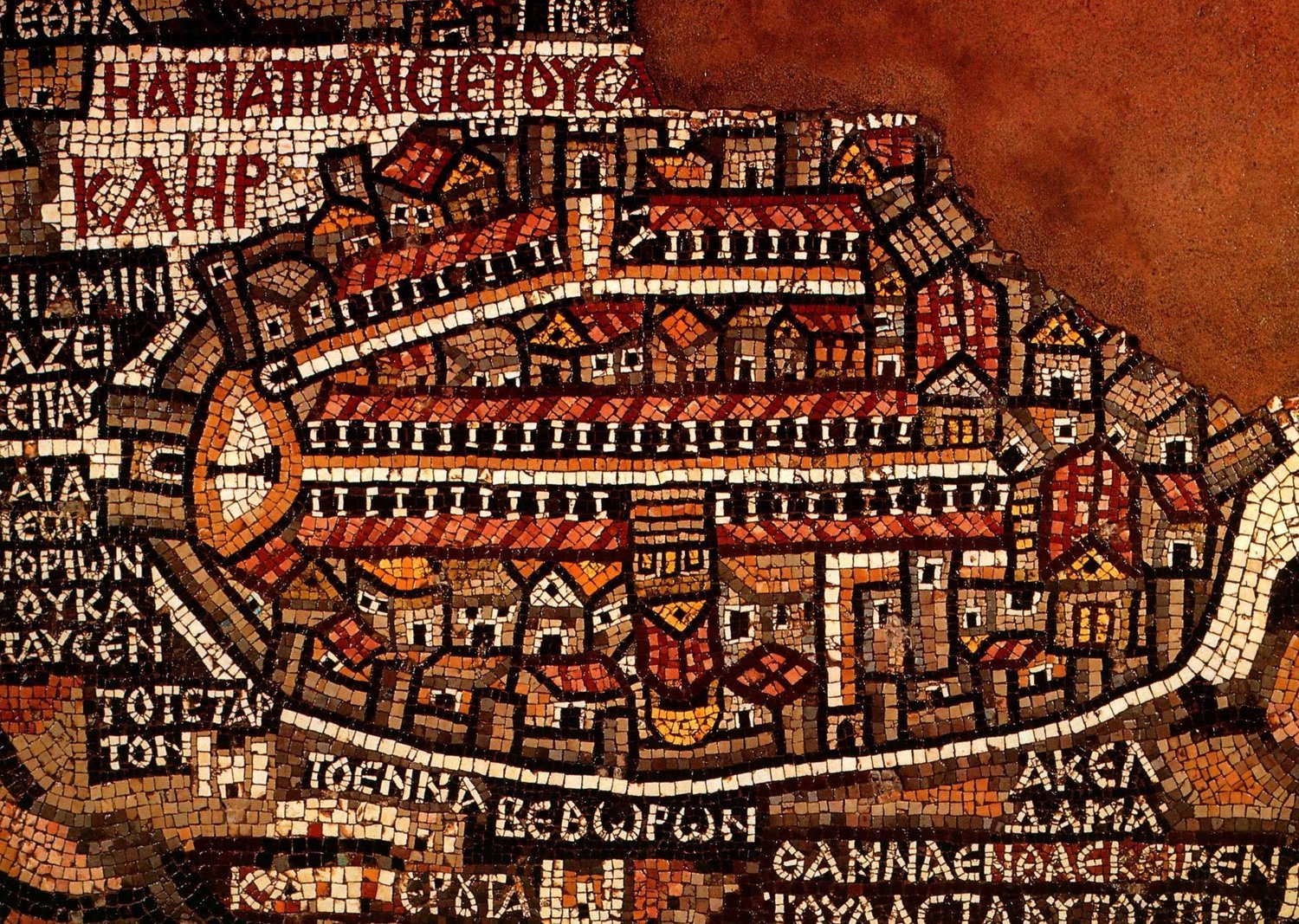I downloaded another chapter from the second book, "The Enchanting Encounter with the East", on my site https://independent.academia.edu/BaizermanMichael
The extract tells about the location of Jerusalem on the European medieval mind maps.

Jerusalem on the Madaba Map
Throughout the late Middle Ages, Jerusalem functioned as the center of the inhabited world on contemporary 'world maps'. The article discloses various aspects of this spiritual vision which only intensifies after the crusaders' exile from the Holy Land.
Pope Urban II launched the First Crusade. Saewulf and San Severino were the pilgrims who visited the Holy Land in the 12th and 15th centuries. They both shared the vision of Jerusalem as the navel of the world.
Sir John Mandeville is a fictitious author of a 14th-century travelog. Prester John is a literary character who attracted European travelers across six centuries.
Bernard of Clairvaux compared his monastery with the heavenly Jerusalem.
Isidore of Seville considered the Holy City the center of the region; he seems to be in doubt about the center of the earth.
Felix Fabri was involved in endless discussions about the centrality of Jerusalem.
Christopher Columbus advocated a new crusade to restore the Christine dominion of Jerusalem.
On May 28th I'm going to deliver a lecture about the origin of Israel. I analyze the Stele of Merneptah, the battle reliefs from the Karnak Temple, and the ongoing quest of the settlers in the central hill country during XIII-XI centuries BCE. The lecture will be held in Russian in the Science House at Tel-Aviv.
